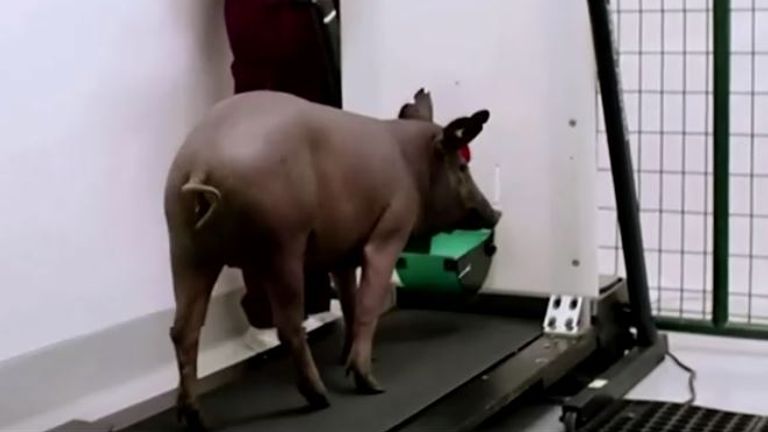Elon Musk, billionaire businessman behind Tesla and SpaceX has unveiled a pig called Gertrude with a coin-sized computer chip in her brain to demonstr
His start-up, Neuralink, which develops ultra high bandwidth brain-machine to interface to connect humans and computers, applied to launch human trials last year. The interface could allow people with neurological conditions to control phones or computers with their mind.
Musk argues such chips could eventually be used to help cure conditions such as dementia, Parkinson’s disease and spinal cord injuries. But the long-term ambition is to usher in an age of what Musk calls “superhuman cognition”, in part to combat artificial intelligence so powerful he says it could destroy the human race.
The processor in Gertrude’s brain sends wireless signals, indicating neural activity in her snout when looking for food.
Musk said the original Neuralink device, revealed just over a year ago, had been simplified and made smaller.
“It actually fits quite nicely in your skull. It could be under your hair and you wouldn’t know.”
Founded in 2017, Neuralink has worked hard to recruit scientists to work on the device which the company is developing. It consists of a tiny probe containing more than 3,000 electrodes attached to flexible threads thinner than a human hair, which can monitor the activity of 1,000 brain neurons.
Ahead of the webcast, Ari Benjamin, at the University of Pennsylvania’s Kording Lab, had told BBC News the real stumbling block for the technology could be the sheer complexity of the human brain.
“Once they have the recordings, Neuralink will need to decode them and will someday hit the barrier that is our lack of basic understanding of how the brain works, no matter how many neurons they record from. Decoding goals and movement plans is hard when you don’t understand the neural code in which those things are communicated.”
BBC
